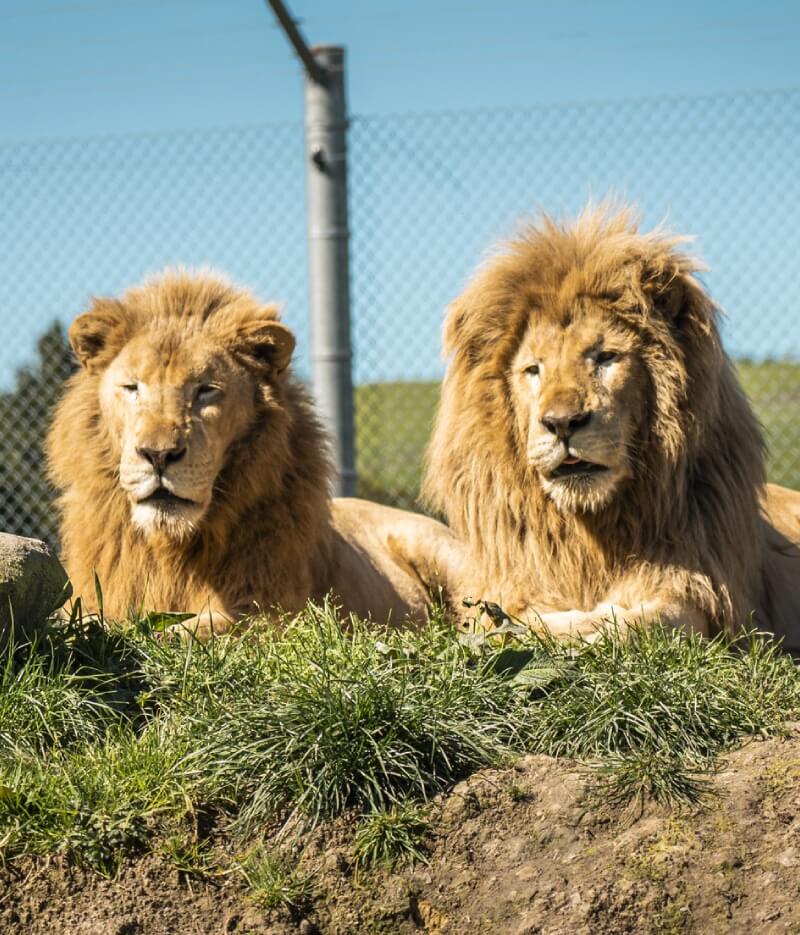Conservation
Big Cat Conservation – Advocacy
Big Cat Conservation is the primary purpose of the Kamo Wildlife Sanctuary, and we need your support to help us succeed.
We are specialists in big cats wellbeing and care, and all our facilities and animals are MPI approved. Our management team are on the ground ‘walking the walk’ in the Sanctuary.
We continue to be home for the big cats and work towards big cat conservation globally. If we weren’t running our own Big Cat Wildlife Sanctuary, we’d be supporting another sanctuary such as a vet friend of ours in Indonesia helped set up for tiger rescues there.
Cheetah populations are now at around 7,000 globally. Their natural habitats across most of Africa and much of Asia have diminished to a small population of perhaps 50 Cheetahs in central Iran and around 5,000 in Africa. With an expected 53% reduction in numbers over the next 15 years, they will be at great risk.

Fun Fact
What’s the difference between an African Lion and a Barbary Lion?
Barbary lions are shorter, heavier, and longer than African lions. They stand at the withers as much as 3 – 11 inches shorter than their African counterparts. Their torso is very muscular and robust and the chest is deeper. Wild Barbary lions are extinct, however there are some lions with similar traits and appearances to Barbary lions in zoos and sanctuary’s such as our Big Cats @ KWS.
Malayan and Sumatran sub-species of tiger are now critically endangered owing to being hunted for body-parts, and to the loss of their habitat. Tigers generally aren’t the kind of neighbour you want either so they are hunted to create safer habitats for humans. Here at Kamo Wildlife Sanctuary, our two Bengal tigers are an aggressive sub-species of tiger making them a target for guns which have left fewer than 2,000 in the wild.
African lions are listed as vulnerable, and in some parts of Africa, as critically endangered, owing to trophy hunting, and retributive hunting by farmers whose stock the lions maraud. Lion numbers have plummeted overall by 50% in the last twenty years.
Leopard populations in Russia, North Africa and the Middle East are critically endangered due to loss of habitat, and lack of prey. Losses are also suffered from hunters who aggressively pursue leopards as killers of farming stock. People in South Asia hunt them for their bones as medicine and their coats for fashionable warmth. It is estimated that there are 700,000+ Leopards left in the wild, with only around 1,700 of them being Indochinese Leopards (Mandla’s subspecies).
A large part of our work here includes a robust enrichment program, and the collection of data. Enrichments include toys to occupy the cats, as well as foods, the offering of scents, providing food supplements, and food treats. We are also introducing public education programmes so even an eight year old can learn what a modern Sanctuary does and how the animals are cared for.
We work to consider where animals needing respite or rescue can be viably re-homed for the animal’s benefit.
Once we have developed our programmes for the big cats currently in our care, we will extend out to educating people about zoos, zoo-keeping, and the training involved with that. We will also become involved with breeding programmes, and hope to bring other big cats into the country such as jaguars, caracals, another leopard, more cheetahs, and more tigers.
We have an ongoing relationship with the Vet Centre Waipu for our big cat care. Our cats are not much different from domestic cats and the Vet Centre has large animal experience. We are also in contact with two vets from Taranaki’s Veterinary Clinic who have more experience with big cats and the two vet groups work well together.
We don’t often need vets but a couple of the cats have arthritis, and there’s a bit of pain management we need to deal with. All our cats get a health check once a year depending on what their condition appears to be. We can’t walk into the enclosure and have a look in their mouth or ears, so we need a vet to anaesthetise the cat. It’s always a balance between anaesthetic risk and health check.
BRING YOUR FAMILY AND FRIENDS AND ENJOY A DAY WITH US AT BIG CATS WILDLIFE SANCTUARY


